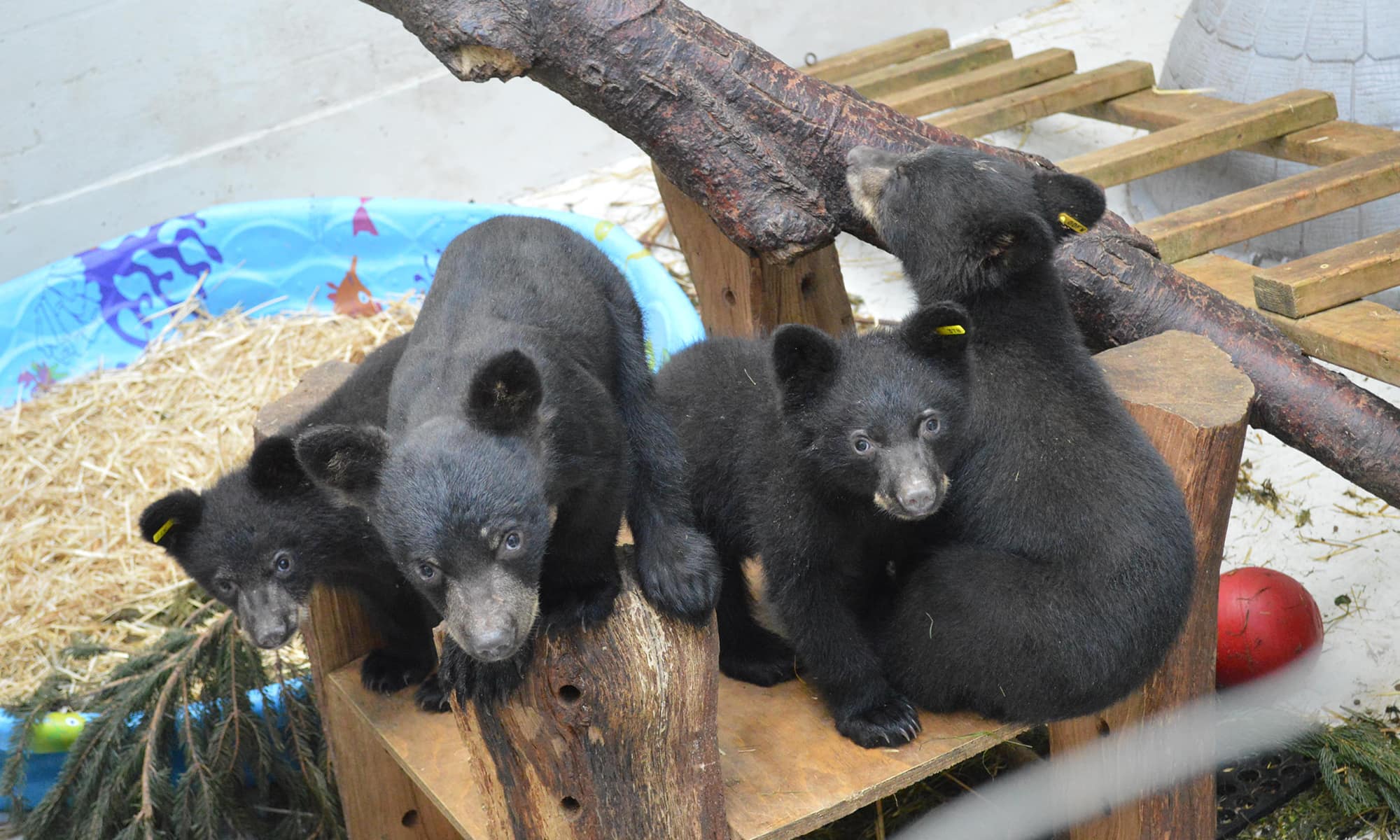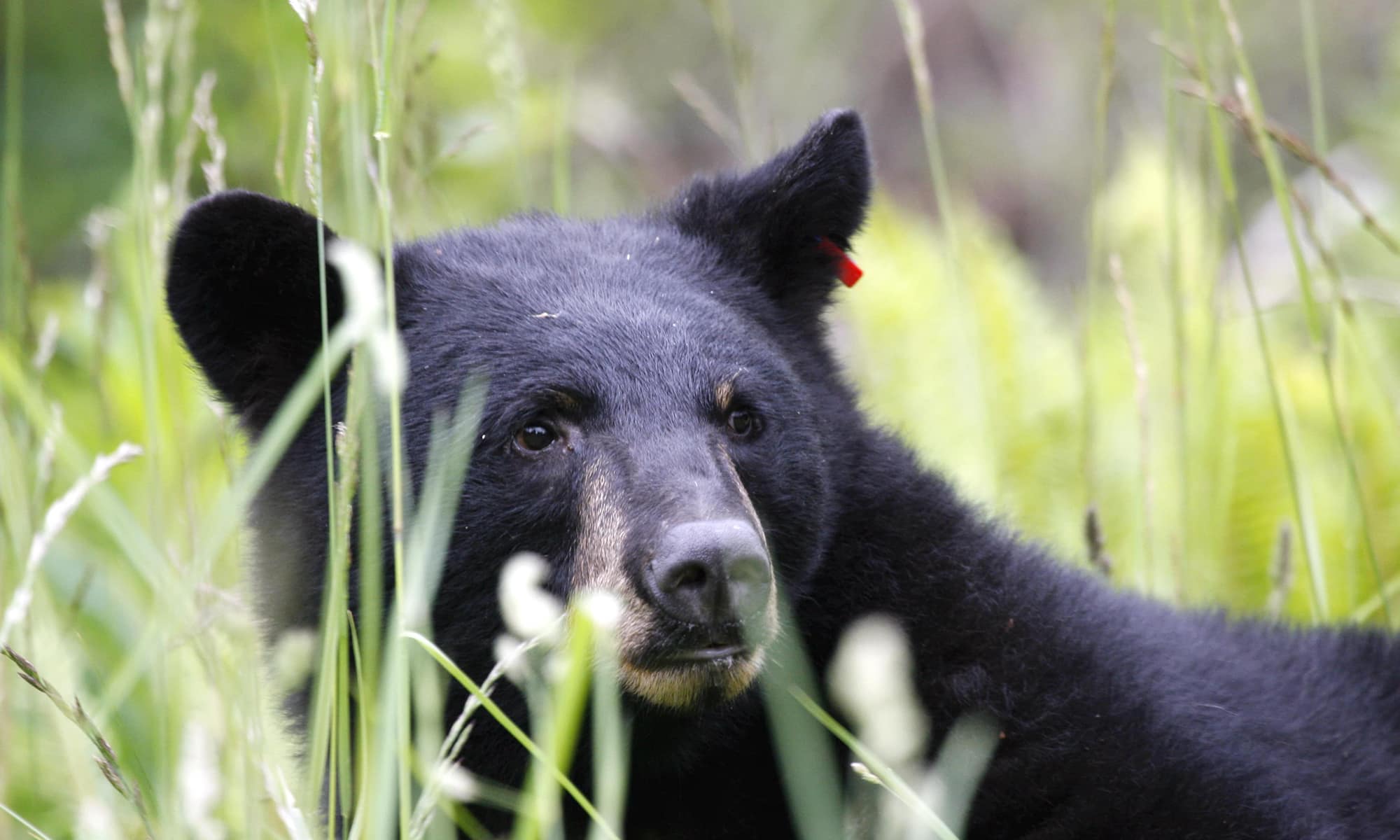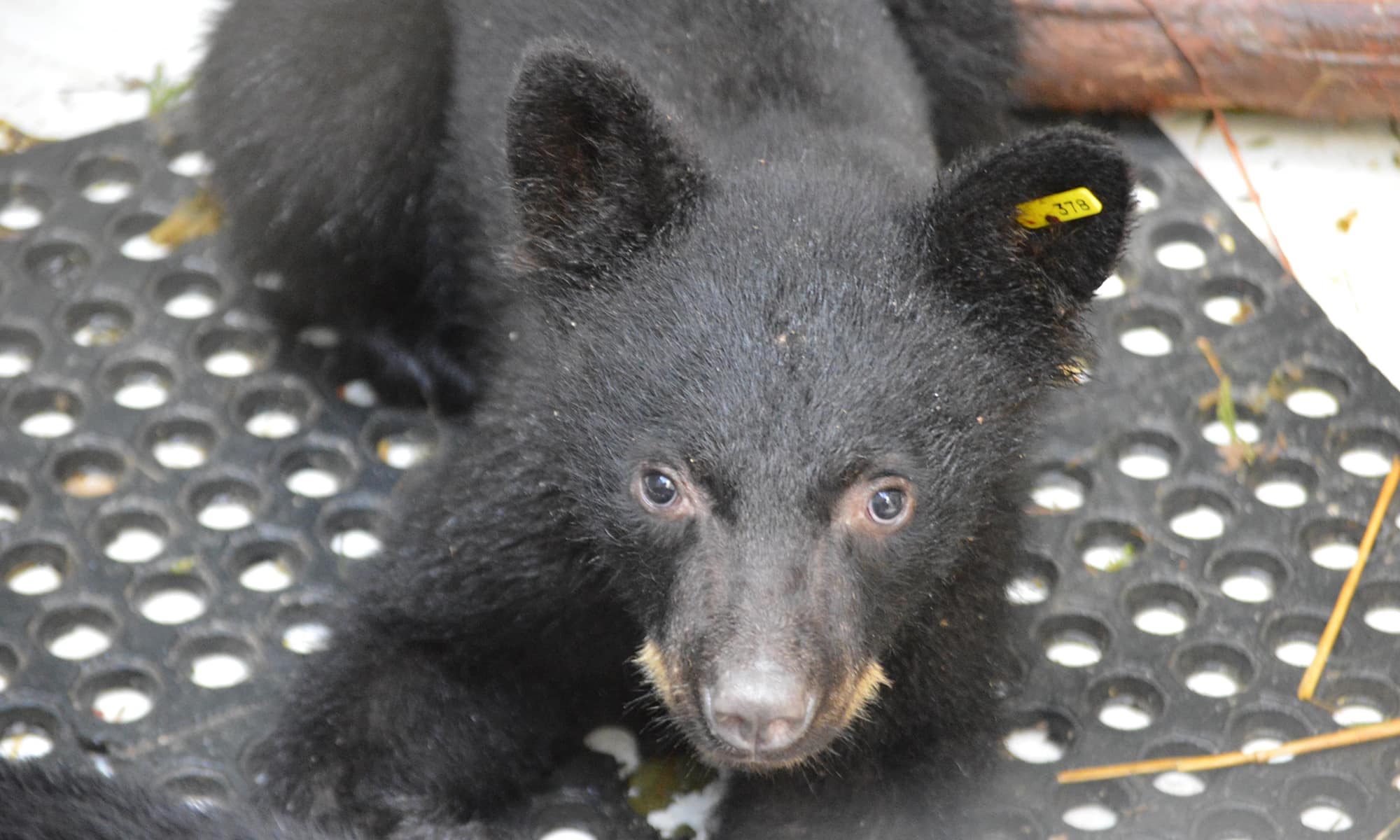Adopting a Cat
Please enjoy this video from Jackson Galaxy, a well-known cat behaviorist and host of...
Read moreBlack Bears (Ursus americanus) are the most common and widely distributed bear in North America. Historically, they ranged over most of the forested regions of North America but they currently reside in 38 states, approximately 62% of their historic range. In Washington the population is estimated to be between 25,000 and 30,000 individuals.
Bears usually avoid people but, due to human populations encroaching on their habitat, people and bears now have a greater chance of encountering each other. As their habitat shrinks you are more likely to see a bear on a daily hike in the woods or even in an urban neighborhood. They are also opportunistic feeders and will take advantage of food left out by humans, such as in trash cans and bird feeders.
Did you know? Humans have co-existed with bears for thousands of years. Some Native American Tribes refused to hunt them because they believed they were their ancestors.
Black Bears can weigh over 300 lbs. and their body length ranges from three to six feet. They have small eyes, small round ears and a short tail. They typically have a brown muzzle and sometimes a white blaze on their chest. Their fur can range from blonde to black in color and they can change color between molts.
Did you know? Unique white and bluish fur phases occur on the Pacific Northwest coast.
Habitat:
Black Bears are very adaptable and can live in a diversity of habitats. However, prime habitat is characterized by relatively inaccessible terrain, thick understory vegetation and an abundant food source in the form of shrubs, or tree-borne soft or hard mast.
Dens:
Black Bears den in tree cavities, hollow logs, small caves and beneath large roots, stumps and logs. Typically they den during the winter months but along the coast they may stay active. The exception to this is pregnant females who always den in the winter to give birth to their cubs.
In the summer Black Bears maintain beds concealed among dense vegetation or under branches of fallen trees.

Black Bear mating takes place in June and July. Females will then give birth to one or two cubs during the following winter; in January or February. Females have one litter of cubs every other year. At six months cubs are able to locate food, but they typically remain with their mother for over a year. Females are the sole caregiver to their cubs.
Black Bears are omnivores, but their diet is largely plant-based and is seasonal. A typical bear diet includes grasses and herbaceous vegetation, skunk cabbage, sedges, some flowering plants, berries, fruits, nuts, insects, eggs, small mammals, carrion, and occasionally elk calves or deer fawns.
Did you know? Although bears like honey, they also consume the bees and their larvae, which are a good source of protein.
Here’s some video footage of black bears foraging during rehabilitation at PAWS Wildlife Center:
Can’t see this video? Try watching it on our Vimeo channel instead.
Black Bears are typically crepuscular but can also sometimes be seen during the day. This is especially true during the fall when they spend up to 20 hours a day foraging to bulk up for winter.
Black Bears are solitary except during the breeding season and when females are rearing cubs.
Black Bears move in response to seasonal availability of food, roaming constantly throughout their home ranges which can be over 60 square miles for males and 10 square miles for females. Females do not share territories but male territories will overlap several female territories.
Bears exhibit a high degree of intelligence, and a high degree of curiosity and exploratory behaviors.
Did you know? Black Bears use sounds, body language, and scent marking to communicate with other bears.

It is becoming increasingly challenging for bears to avoid humans as our population continues to expand and more and more wildlife habitat is developed for human use. These animals need a lot of space, and every year they have less land available to them. As neighborhoods appear in what was formerly prime bear habitat, encounters are likely to occur.
The best advice for co-existing with these large mammals is to make well thought out decisions about managing your home, property, or outdoor activities. Forethought will go a long way in preventing negative encounters.
NEVER feed bears. Over 90 percent of bear/human conflicts result from bears being conditioned to associate food with humans. A wild bear can become permanently food-conditioned after just one hand out.
Fed bears often lose their fear of humans, may become aggressive, and may cause property damage. Once a bear becomes food-conditioned and habituated, wildlife agencies may be forced to kill it for human safety reasons.
If you live in bear country:

If you find a bear cub you think needs help, always call PAWS at 425.412.4040 before attempting to approach, pick up or contain the animal. We can help you determine if the cub needs help.
Mother bears are extremely protective of their young ones, so you don’t want to get in between a mother and her cub. Often these cubs are not orphans and mothers are not too far away.
Feldhamer G.A., Thompson B.C. & Chapman J.A. (Eds). (2003). Wild Mammals of North America, Biology, Management, and Conservation (2nd ed.). Baltimore MD: The Johns Hopkins University Press.
North American Bear Center. June 5, 2015. Bear Facts.
Washington Department of Fish and Wildlife. June 5, 2015. Living with Wildlife: Bears
Western Wildlife Outreach. June 5, 2015. Black Bear Outreach
Images & video: Copyright PAWS 2015
Please enjoy this video from Jackson Galaxy, a well-known cat behaviorist and host of...
Read moreHow much will it cost to care for a new animal companion? It’s important to...
Read morePlease enjoy this blog post from Victoria Stilwell’s positively.com website....
Read more